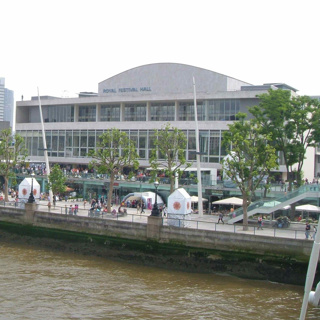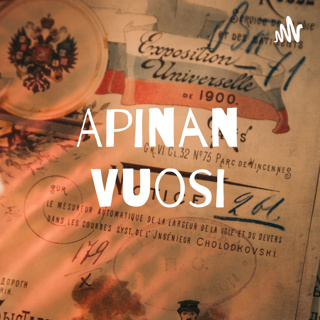
38. Malbrough s’en va-t-en guerre
The War of the Spanish succession was really just the continuation of the Nine Years' War, but this time with the specific issue of the succession to the Spanish throne at stake. That, incidentally, meant that Spain swapped sides, fighting with France this time around, since the dying Spanish king had triggered the war by leaving his crown to a claimant from the French royal family. It was a war where the Grand Alliance, again led by Austria, Britain and Holland, won a few battles. It was its turn, after all, following the French victories in the Nine Years' War. But just like those earlier wins, it didn't lead to an outcome from the war any more decisive than the previous time around. What it did come up with was something rare in British history, an effective general in the Duke of Marlborough. A costly one, though, since many of his victorious battles, often fought with his friend and equally skilled Austrian counterpart, Eugene Prince of Savoy, were practically Pyrrhic in their losses for his own side. It was also a war in which, though England went in, Great Britain came out. But why is the subject of episode 39. Illustration: The Duke of Marlborough greeting Prince Eugene of Savoy after their victory at Blenheim, Robert Alexander Hillingford. Public domain. This work is in the public domain in the United States because it was published (or registered with the U.S. Copyright Officer) before January 1, 1926 Music: Bach Partita #2c by J Bu licensed under an Attribution-NonCommercial-No Derivatives (aka Music Sharing) 3.0 International License
23 Touko 202114min

37. Who'll take the decisions?
As William III, reigning alone since the death of his wife Mary II, approached the end of his reign, there was clearly a vital issue to address. Mary's sister Anne was the only Protestant heir to the throne recognised in law, and England was certainly not going to put up with another Catholic monarch, after James II. But to find a non-Catholic heir meant going back up the royal family tree quite a way, to James VI/I indeed, and making his granddaughter, Sophia, wife of the ruler (Elector) of Hanover, next in line after Anne to the throne. The Act, however, did more than that. It had measures that further strengthened the authority of parliament. And by just declaring that parliament could decide the succession, it also underlined that it would take this kind of decision. Was the monarch appointed by God, as the Stuarts maintained? No, replied the parliamentarians. The law - and that means us - will decide the succession. That was another step towards parliament being responsible for more and more decisions generally. In turn, that meant that political parties would be taking them. Which makes it all the more important that the growing power of business was becoming such a major influence in political life. Business would, in particular, be a major factor in the war that started at this time, not three years since the end of the previous one. Illustration: Sir Godfrey Kneller’s portrait of Anne as a young woman, when she was still simply heir to the throne, as Mary II’s sister, before she became Queen herself. National Portrait Gallery 1616 Music: Bach Partita #2c by J Bu licensed under an Attribution-NonCommercial-No Derivatives (aka Music Sharing) 3.0 International License
18 Touko 202114min

36. Just one war after another
Just as soon as William III could free himself up from wars in the British Isles, to secure his throne (and his wife Mary II's), he got stuck into the fighting on the Continent, on behalf of his home country of Holland. This was the Nine Years War, where the Grand Alliance fought to block the attempts of Louis XIV's France to win the territory it needed to give it what it regarded as defensible borders (its 'natural' borders). It might have looked as though France was championing Catholicism against Protestant Holland, except that the Grand Alliance included Catholic states, most notably the major power Austria and the waning but still significant one, Spain. Getting the religion right obviously mattered, but never as much as serving the national interest. This was the Nine Years' War, and nine years was a long time for pre-industrial economies to wage war. In the end, exhausted, the combatants were forced to the negotiating table. Changes were small, and the biggest questions left unanswered. The biggest of them all is what would happen once the inbred, deeply ill and childless king of Spain, Charles II, died. Who'd inherit his throne and his country's still considerable territories? By not deciding such pretty crucial matters, the powers only left them to provoke another war in the near future. Just as soon as the Spanish king died. Which he did, not three years later. Illustration: Charles II of Spain, by Juan Carreño de Miranda, showing the Hapsburg jaw, outwards sign of terrible health handicaps caused by generations of inbreeding.. Copyright ©Museo Nacional del Prado Music: Bach Partita #2c by J Bu licensed under an Attribution-NonCommercial-No Derivatives (aka Music Sharing) 3.0 International License
13 Touko 202113min

35. Bloodless? Did I say bloodless?
That’s it: we’ve reached the great and dreadful moment of the Battle of the Boyne, an event that casts its shadow right down to the present day. Each year – on an oddly chosen anniversary date – Orangemen, called after William of Orange, march in Northern Ireland to remind everyone of their triumph over Catholic forces. Then the episode switches its attention to Scotland, and events just as iconic, occurring in the picturesque valley of Glencoe. The Boyne and Glencoe: they demonstrate just how little the word ‘bloodless’ applies to the Glorious Revolution. And in what a limited sense it was even glorious. Illustration: Jan van Huchtenburgh: Battle of the Boyne. Public domain, original in the Rijksmuseum, Amsterdam. This work is in the public domain in the United States because it was published (or registered with the U.S. Copyright Office) before January 1, 1926. Music: Bach Partita #2c by J Bu licensed under an Attribution-NonCommercial-No Derivatives (aka Music Sharing) 3.0 International License
8 Touko 202110min

34. Another theatre in a wider war
It's the run up to the Battle of the Boyne. So we're chatting about the many motivations for William III's invasion of England. Yes, the aims of the Glorious Revolution, protecting or simply implementing a particular view of a certain number of English liberties, mattered. But there was also the much more personal objective of protecting his wife's claim to the English throne, which he would share with her. And then, as a Dutchman, he wanted to get on with fighting Holland's war against France. For that, English neutrality would be a great improvement over its potential involvement on Louis XIV's side; even better, having it join with Holland would be a huge boost. And if he were king, couldn't he make sure that happened? A lot was at stake when the sides met at the Boyne. But it wasn't just the fate of the English and Scottish crowns, or of Catholicism in Britain and Ireland. It was also the hopes of defeating France in a much wider European war. That made the Irish campaign one theatre in that war. Illustration: King Louis XIV of France, ‘Louis the Great’, the ‘Sun King’. The figure dominating the European scene and threatening the other powers. National Portrait Gallery, Smithsonian Institution; purchased through a generous contribution by Joseph Verner Reed to the Victor Proetz Memorial Fund Music: Bach Partita #2c by J Bu licensed under an Attribution-Non Commercial-No Derivatives (aka Music Sharing) 3.0 International License
3 Touko 202111min

33. Two for the price of one
The Glorious Revolution led to England having two reigning monarchs for the price of just one: William III and Mary II, or Williamandmary, as we like to think of them. It started with a Bill of Rights, which no one signed and never became law, but it was destined to have a great role in the future. Curious, isn't it, how something with no immediate impact can turn out to be historic? Some bits of it led to legislation, including the Settlement Act, which legitimised the new monarchs' rule, a pretty remarkable step, seeing as it made the sovereign's power dependent on parliamentary authority. Above all, the new approach firmly rooted the notion that the monarch needs the consent of parliament to some of his (or her) actions. That was especially true of the more expensive ones, since it and it alone would control taxation in the future. All this was hardly the beginning of democracy, but it did mark the end of arbitrary royal power. A pretty significant development, given how absolutist other regimes were, notably in France, Europe's leading power at the time. Illustration: King William III; Queen Mary II by Jakob van der Schley, after Hubert-François Gravelot (né Bourguignon) National Portrait Gallery D10672 Music: Bach Partita #2c by J Bu licensed under an Attribution-NonCommercial-No Derivatives (aka Music Sharing) 3.0 International License
28 Huhti 202111min

32. Glorious Revolution
Was it glorious? Was it even a revolution? The Glorious Revolution brought to an end the short and little lamented - indeed, lamentable - reign of James II of England, James VII of Scotland, and with it, the Stuart dynasty on the throne of England. But there was little fighting, particularly as James behaved uncharacteristically and fled abroad, after offering little resistance. And while there was certainly significant change, in that William III and Mary II replaced the king, and did so on the invitation of parliament, not by divine right - a revolution in seventeenth-century terms, as the wheel of fortune revolved - it was hardly revolutionary in our understanding of the word. Little glory, then, and barely a revolution. But all the same, a highly significant event, as we shall see. Illustration: JMW Turner, Prince of Orange landing at Brixham Indianapolis Museum of Art Music: Bach Partita #2c by J Bu licensed under an Attribution-NonCommercial-No Derivatives (aka Music Sharing) 3.0 International License
23 Huhti 202110min

31. The Stuarts: plumbing the depths
We stand on the brink of saying goodbye to the Stuart kings, at last (not, alas, to the Stuarts though: they'll be back a couple more times to haunt us). The history of England saved the worst to last: James II, or James VII in Scotland, was the bottom of the barrel, the worst of the Stuarts, the man whose only achievement was to help shorten his reign by his sheer ineptitude. We'll find out how, we'll find out who was standing in the wings ready to take over, and how he needed to be invited before he'd come to the party. Illustration: Anne Hyde, the king's wife, with James II. By Sir Peter Lely National Portrait Gallery 5077 Music: Bach Partita #2c by J Bu licensed under an Attribution-NonCommercial-No Derivatives (aka Music Sharing) 3.0 International License
18 Huhti 202110min






















